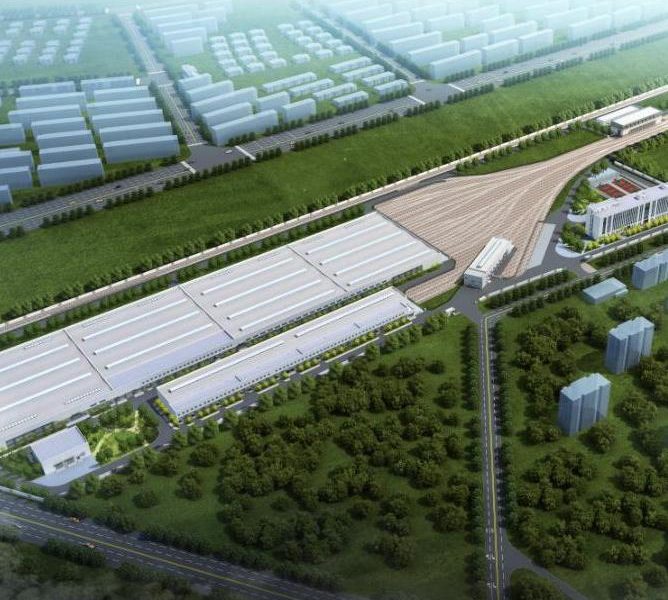
Maximizing Efficiency and Longevity: Best Practices for Steel Office Buildings and Industrial Factories
Steel structures have revolutionized modern construction by providing durable, cost-effective, and versatile solutions for offices, industrial factories, and commercial buildings. For B2B buyers and international developers, investing in steel office buildings or industrial factories ensures not only rapid construction but also long-term value, operational efficiency, and sustainability.
In this article, we’ll explore best practices for maximizing efficiency and longevity in steel structures, from design and installation to maintenance and export considerations.
1. The Advantages of Steel Office Buildings and Factories
Steel structures offer numerous benefits over traditional concrete or brick buildings:
- High Strength-to-Weight Ratio: Steel can support large spans, allowing open floor plans without excessive columns.
- Fast Construction: Prefabricated steel components can be assembled quickly, reducing project timelines significantly.
- Flexibility in Design: Steel buildings can easily accommodate expansions, additional floors, or layout changes.
- Durability: Resistant to termites, rot, and extreme weather, steel structures last decades with minimal maintenance.
- Sustainability: Steel is 100% recyclable, contributing to environmentally friendly construction.
These advantages make steel office buildings and industrial factories ideal for export projects where speed, reliability, and quality are essential.
2. Design Considerations for Maximum Efficiency
A well-designed steel structure optimizes both functionality and long-term performance. Key design considerations include:
A. Layout Optimization
- For factories: Plan production lines, storage zones, and loading areas for smooth workflow.
- For office buildings: Maximize natural light and open spaces to improve energy efficiency and worker productivity.
B. Structural Integrity
- Use high-quality galvanized steel or hot-rolled steel for frames.
- Ensure proper foundation design to distribute loads evenly.
- Incorporate bracing and connections that meet international building codes (ISO, CE, ASTM).
C. Roof and Wall Systems
- Insulated roof panels reduce heat transfer and improve energy efficiency.
- Wall panels with thermal and acoustic insulation enhance comfort and reduce operating costs.
D. Integration of Utilities
- Plan electrical, plumbing, and HVAC systems during the design phase to minimize retrofitting.
- Modular integration allows for easy upgrades or expansions in the future.
3. Installation Best Practices for Export Clients
For B2B buyers importing steel office buildings or factories, proper installation is crucial for long-term efficiency:
- Follow Manufacturer Guidelines: Use detailed drawings and follow connection specifications precisely.
- Use Qualified Labor: Although prefabricated, correct bolt tightening and alignment are essential for structural stability.
- Inspect Components On-Site: Check for shipping damage, missing parts, or corrosion before assembly.
- Plan Site Logistics: Ensure cranes, forklifts, and staging areas are available for large steel frames.
These measures ensure rapid assembly without compromising structural integrity.
4. Maintenance Tips to Extend Lifespan
Even the most durable steel buildings require periodic maintenance to maximize longevity and reduce costs:
A. Routine Inspections
- Check for signs of corrosion or paint peeling.
- Inspect roof and wall panels for leaks or damage.
- Verify structural connections, bolts, and braces annually.
B. Protective Coatings
- Apply anti-corrosion coatings to exposed steel.
- Repaint as needed to prevent rust in coastal or humid regions.
C. HVAC and Insulation Maintenance
- Clean and inspect air conditioning and ventilation systems regularly.
- Replace worn-out insulation panels to maintain energy efficiency.
D. Floor and Interior Upkeep
- Maintain concrete floors or epoxy coatings to prevent wear from machinery.
- Regularly clean office and factory interiors to preserve finishes and improve longevity.
5. Cost Optimization Strategies
Efficient steel buildings not only save construction time but also reduce operating costs:
- Energy Efficiency: Use insulated panels, skylights, and natural ventilation to reduce energy bills.
- Modular Expansion: Design with future growth in mind to avoid costly demolition and reconstruction.
- Preventive Maintenance: Address minor issues early to prevent expensive repairs later.
- Multi-Use Spaces: Design areas that can serve multiple functions (offices, storage, workshops) to maximize ROI.
By integrating these strategies, businesses can maximize long-term return on investment.
6. Sustainability and Green Building Practices
Sustainability is increasingly important for international buyers:
- Recyclable Materials: Steel frames and panels are fully recyclable.
- Reduced Waste: Prefabrication produces minimal on-site waste.
- Energy Efficiency: Proper insulation and ventilation reduce heating and cooling costs.
- Eco-Friendly Coatings: Use water-based paints and anti-corrosion treatments to minimize environmental impact.
Export clients can leverage these features to meet local environmental regulations and global ESG standards.
7. Export Considerations for B2B Buyers
Steel office buildings and industrial factories are highly suitable for export projects due to:
- Prefabricated Components: Easy shipment in containers or flat packs.
- Rapid On-Site Assembly: Reduces labor dependency and construction time overseas.
- Compliance with International Codes: Designs meet multiple global standards.
- Customizable Configurations: Buildings can be adapted to local climate, regulations, and client needs.
These factors make steel structures a smart choice for multinational companies and international projects.
8. Maximizing Operational Efficiency in Factories and Offices
To achieve the best performance:
- Streamline Layouts: Position machinery, workstations, and storage for optimal workflow.
- Invest in Automation: Integrate conveyor belts, cranes, or smart office systems.
- Monitor Environmental Conditions: Use sensors for temperature, humidity, and energy usage.
- Plan for Future Expansion: Ensure modular connections allow additional floors or sections without major disruption.
Efficiency combined with durability ensures a long-lasting, high-performing building.
Conclusion
Steel office buildings and industrial factories are the ultimate solution for B2B export clients seeking speed, durability, and cost-efficiency. By adhering to best practices in design, installation, and maintenance, businesses can maximize both operational efficiency and long-term ROI.
For international projects, prefabricated steel solutions provide scalable, sustainable, and high-quality buildings that are ready to meet the demands of modern industry and commerce.
